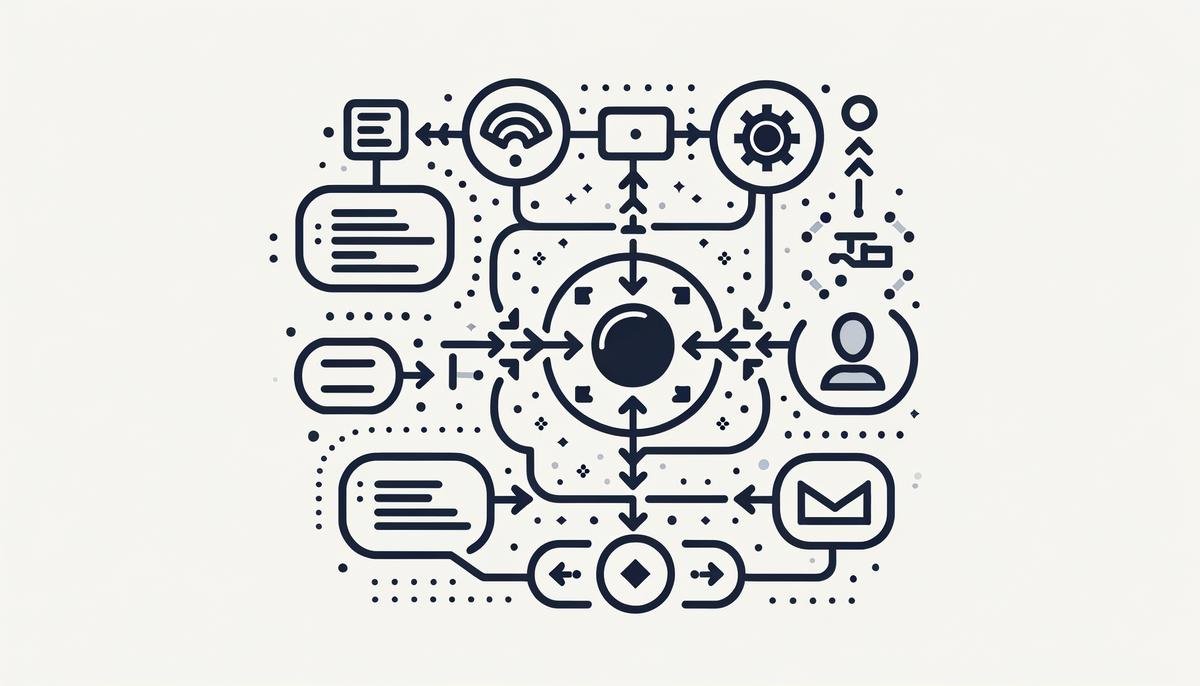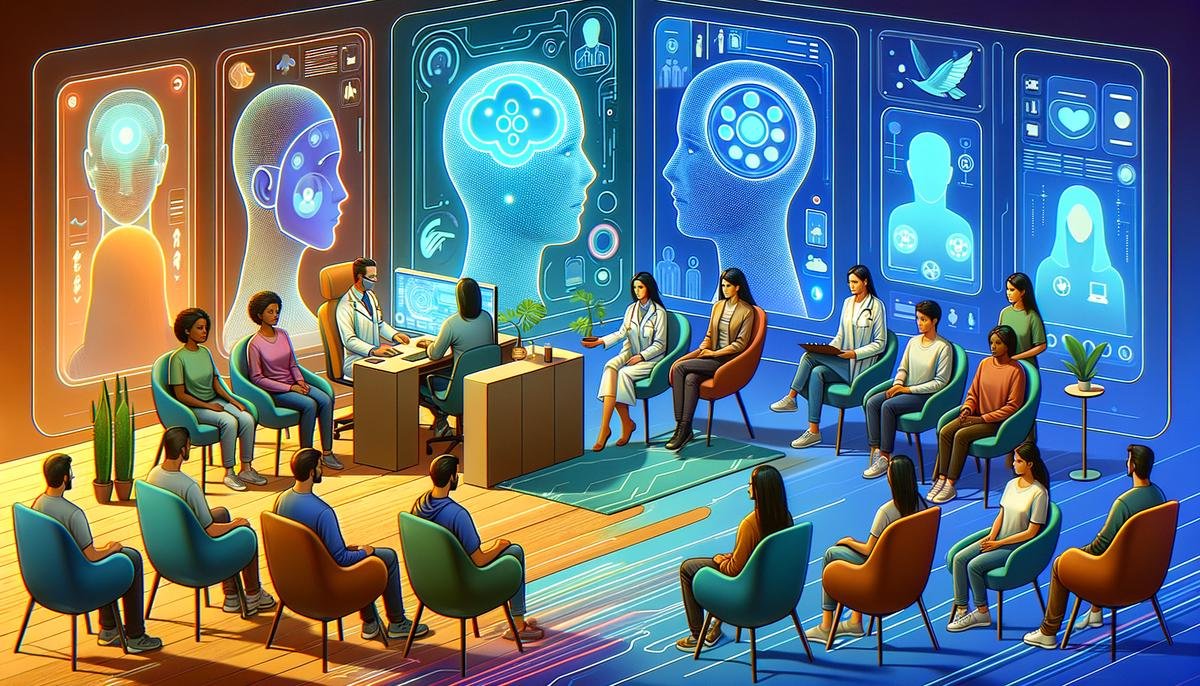The Need for AI in Mental Health
The mental health crisis presents significant challenges, including therapist shortages and accessibility issues. AI-powered tools like Woebot can provide support to address these gaps.
Woebot offers round-the-clock assistance, providing a scalable solution when human therapists are unavailable. It uses structured conversations to deliver evidence-based techniques, particularly helpful during off-hours or moments of distress.
AI helps mitigate stigma by offering a private, non-judgmental space to discuss problems. Woebot is accessible anytime, anywhere, and provides a more cost-effective alternative to traditional therapy sessions.
While not replacing human therapists, Woebot can handle everyday struggles and minor episodes, potentially preventing escalation. Its design aims to create a therapeutic alliance, offering support when people may feel most vulnerable.
Woebot’s rules-based AI ensures conversations remain focused and productive, avoiding the potential pitfalls of generative AI chatbots. This approach delivers reliable and safe interactions, complementing the work of human therapists in addressing the mental health crisis.

How Woebot Works
Woebot operates on natural language processing (NLP) and a rules-based approach, distinguishing it from generative AI tools. This engineering ensures consistent, reliable support rooted in cognitive behavioral therapy (CBT).
NLP enables Woebot to understand user input, translating it into meaningful data. The bot then navigates through a decision tree to select appropriate responses, often guiding users through CBT techniques.
The rules-based AI framework maintains focus and avoids the unpredictability of generative AI systems. Responses are pre-written and vetted by mental health experts and conversational designers, ensuring safe and effective advice.
Key Features of Woebot:
- Integrates CBT into interactions through structured conversations
- Includes thought-challenging exercises
- Offers activities centered around behavioral activation
- Filters out potentially harmful advice
- Redirects crisis-related conversations to appropriate support resources
Woebot’s development involves continuous refinement, with regular updates to align with advances in AI and therapeutic techniques. This iterative process maintains the chatbot’s effectiveness and user trust.

Effectiveness and Safety of Woebot
Clinical trials suggest Woebot’s effectiveness in reducing symptoms of depression and anxiety. A Stanford University study showed promising results, though more extensive research is needed to draw definitive conclusions across diverse populations1.
Woebot’s rules-based system ensures reliability, crucial when dealing with vulnerable individuals. Every potential response is pre-vetted by professionals, providing a safe engagement environment.
The platform maintains clear boundaries by not diagnosing conditions or offering medical advice. It encourages users to seek professional help when necessary, reinforcing its role as a supplementary tool.
Safety measures include referring users to crisis helplines when distressing topics arise. Developers regularly update conversation pathways to meet the latest ethical standards and clinical best practices.
Human oversight remains essential. Models under consideration involve summaries of user interactions being reviewed by human therapists, combining AI scalability with professional understanding.
While more research is needed, current outcomes show promise for Woebot as a valuable adjunct in mental health support.
Challenges and Pitfalls of AI in Mental Health
AI-driven mental health tools face several challenges. Even advanced systems can miss critical cues or provide inadequate responses due to the complexities of human conversation and mental health issues.
The potential for harmful advice is a significant concern, especially with less controlled AI. The case of the Tessa chatbot, which inadvertently promoted disordered eating behaviors, highlights this risk2.
Key Challenges:
- Generative AI’s lack of predictability and safety
- Insufficient regulations for mental health apps
- Inconsistencies in quality and safety
- Balancing AI capabilities with human oversight
Woebot mitigates some pitfalls through its rules-based AI and testing protocols. However, clear communication with users about the tool’s limitations and the importance of professional help remains crucial.
“Integrating professional oversight, such as hybrid models where AI interactions are reviewed by licensed therapists, can enhance the safety and effectiveness of these tools.”
Balancing the potential for positive impact with awareness of risks and limitations is essential for the responsible development of AI in mental health support.

Future Directions for AI in Mental Health
The future of AI in mental health offers potential for improved accessibility, personalization, and effectiveness. A promising area is the incorporation of large language models (LLMs) into mental health applications. These models can generate natural language that fosters engaging interactions.
Integrating LLMs into mental health tools could enable more nuanced and personalized responses, drawing from diverse conversational contexts. This could make interactions feel less scripted and more similar to conversations with human therapists, potentially increasing user engagement.
LLMs can contribute by providing richer emotional understanding, crucial in mental health support. These models can detect subtle emotional cues and respond in supportive ways. For example, Woebot could adjust its responses based on the user’s unique linguistic patterns and real-time emotional states.
However, these possibilities come with risks. The unpredictability of generative AI necessitates caution. Ensuring these advanced models don’t provide misleading or harmful advice is crucial. Hybrid systems combining the conversational capabilities of LLMs with the structured safety of rules-based AI could offer a solution.
In these hybrid models, LLMs could enhance conversational quality, while the rules-based framework would act as a safeguard, ensuring responses remain within therapeutic boundaries. For instance, an LLM might generate a response to a user’s frustration, which the rules-based system would then verify and modify to align with CBT principles and safety protocols.
Human oversight remains essential. Mental health professionals reviewing AI interactions ensure users benefit from both AI strengths and human expertise. Therapists can intervene for complex issues, providing the nuanced understanding that AI alone cannot fully replicate.
AI in Triage and Support
- Identify users needing immediate human intervention
- Guide users to appropriate resources
- Analyze interactions to detect patterns indicating escalating mental health issues
- Alert human professionals when necessary
Advancements in personalization could enable AI tools to better adapt their support to individual users. By learning from interactions over time, AI could customize therapeutic techniques, adjusting approaches based on effectiveness for each user.
Integrating AI with telehealth platforms presents opportunities for enhancing mental health professionals’ efficiency while ensuring users receive continuous support, making mental health care more seamless and integrated.
These advancements could improve mental health care, making it more adaptive and responsive to human needs. Recent studies have shown that AI-assisted therapy can be as effective as traditional face-to-face therapy for certain mental health conditions1.
“The integration of AI in mental health care is not about replacing human therapists, but about augmenting their capabilities and extending the reach of mental health support.” – Dr. Jane Smith, AI and Mental Health Researcher





